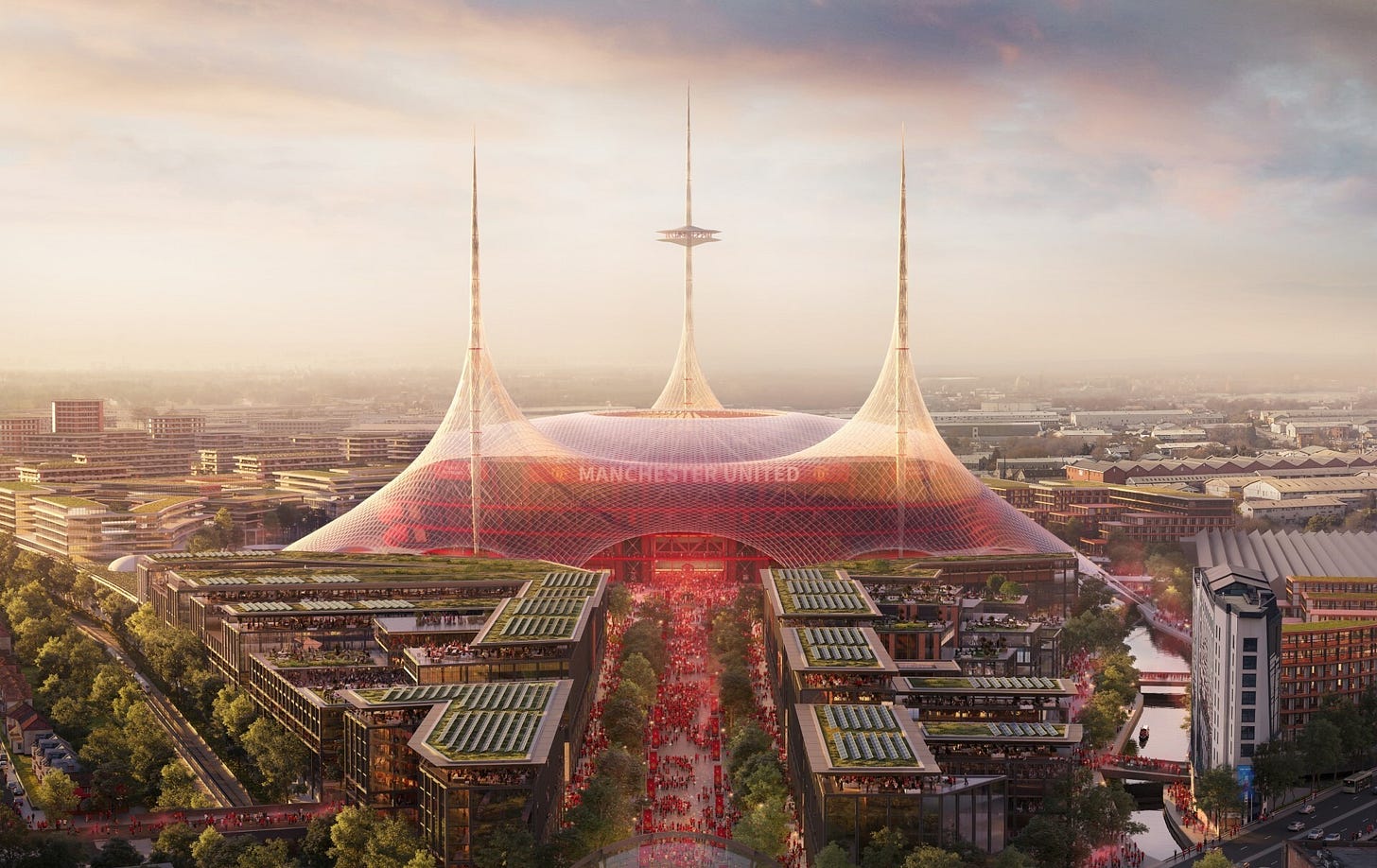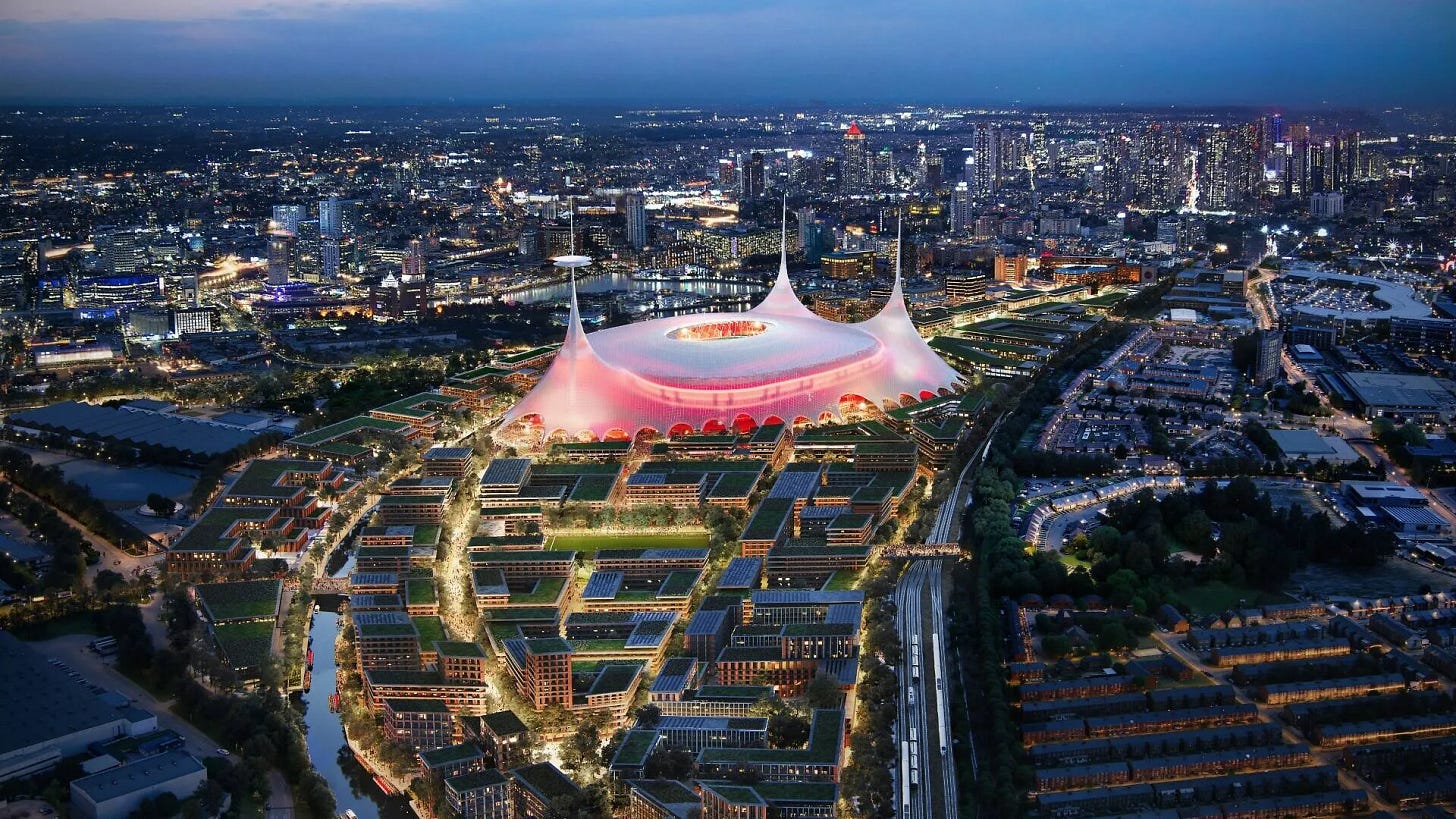New Trafford: An affront to heritage?
Why do the proposals for Manchester United's new stadium make me so queasy?

It’s been a week since Manchester United unveiled their staggeringly ambitious plans to build a new £2billion stadium to replace Old Trafford.
There can be no doubt that this is a project the likes of which we have never seen on these shores. This goes beyond the construction of a state of the art 100,000 seater stadium – the largest in the UK . Rather, the project aims to regenerate the entire Trafford area.
According to Foster+Partners – the project leaders - the stadium will be “outward looking” and “the beating heart of a new sustainable district”. The whole site “will be completely walkable, served by public transport, and endowed by nature”, he said. “It is a mixed-use miniature city of the future – driving a new wave of growth and creating a global destination that Mancunians can be proud of.”
I was quoted last week in an article in the Canadian newspaper The Globe and Mail talking about the potential mutual benefit for club owners and supporters in the context of modern stadia:
“At its best, the stadium space creates an almost virtuous cycle, where the fans are getting what they want: a sense of belonging, a good view of the pitch, a place to have a drink and socialize with other people who support the same team as them…then the club gets the money from it and can increase their revenue and theoretically be more successful on the pitch.”
In theory – this is exactly what the New Old Trafford project promises. An easy sell, right?
But as images of the stadium designs have flooded my social media for the last week, I’ve been stewing on the fact that this entire endeavour makes me feel incredibly queasy. I’ve been trying to articulate exactly why that is.
There is, of course, the much discussed aesthetic element of the plans.
The images I’ve seen have not just upset my footballing traditionalist sensibilities, but openly defiled them. This is a stadium that is more of Mordor than Manchester, a ludicrous space age confection draped in cling film.
Then, there is the deeply controversial question of funding.
Though Manchester United have assured fans they will fund the stadium itself, Sir Jim Ratcliffe - the club’s public face - has suggested money for the wider regeneration for the stadium should come from the public pocket.
This seems problematic on two fronts. First, there are the terrible optics of a debt-laden club unveiling plans for a new £2billion super stadium in the midst of a huge wave of redundancies and spending cuts – which have seen United sack over 200 staff and halting the provision of free lunches.
Second, there is the crucial question of exactly why the government should spend huge amounts of money subsidising the regeneration project. Despite the club’s posturing about a football-led regeneration of the Trafford area, there is scant academic evidence that new stadium projects actually generate significant economic development. As Jonathan Liew pointedly asks in his excellent op ed in today’s Guardian:
“If ‘New Trafford’ is such a nailed-on wealth generator, then why aren’t Ratcliffe and the Glazers funding it themselves?…Why is Ratcliffe, a man who moved to Monaco in order to avoid paying the British exchequer an estimated £4bn in taxes, not putting his outrageous fortune where his muttering mouth is?”

But above all, my unease at the new Manchester United stadium project is rooted in the very thing that this Substack is about: heritage.
There was a time, even within my living memory, when Old Trafford was the beating heart of a community. Much has been written on the ways in which stadiums have historically vivified entire areas of cities, as thousands of match going fans descend on local institutions such as pubs and chippies on match days.
Perhaps even more important is how Old Trafford has created and sustained a vibrant, deeply meaningful intergenerational culture. To generations of families – Mancunian and beyond – Old Trafford has been a place of worship, a locus to congregate and commune every two weeks over the course of seasons, bleeding into decades, bleeding into lifetimes.
Old Trafford - this decaying old cathedral – encapsulates football culture at its best, as something deeply place-bound, community-facing and intergenerational.
Though I accept that change and stadium moves are inevitable, even necessary to keep serving fan communities, Manchester United’s new stadium project threatens the very qualities that give football its cultural meaning.
It is a project that can only be created by the neoliberal hellscape that is elite level English football.
It doesn’t seek to face, nurture and support a local community, but attract a global fanbase. It doesn’t seek to sustain a mutually beneficial network of local businesses, but to financially colonise the entire area – bringing the entire matchday experience under the money-grabbing umbrella of the club.

Most importantly, it doesn’t seek to nurture the historical bonds, loyalties and rituals which have given Manchester United and English football in general its cultural salience.
It is the coup de grace in United’s wider project of pushing aside the communities of supporters who have traditionally sustained the club in favour of wealthier tourist consumers who can line the pockets of the clubs’ shareholders.
The reason then that this new stadium project sticks so firmly in my craw is that it seems to foreshadow the changes that are coming to elite level English football, as it transforms from a rooted, community-focussed, vibrant culture, towards a global entertainment product.
These plans - this attack on the heritage and social fabric of the game I love - are a grim portent of things to come. This is a game that is no longer about community. It is about investment, extortion and ownership.
For more commentary on Manchester United’s new stadium, I recommend Jonathan Liew’s excellent article in the Guardian, and Edwin Heathcote in the Financial Times.





I can’t believe I missed this Josh